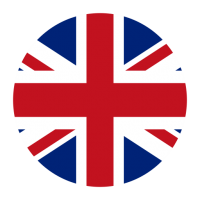🦵 Calf Implants in Turkey – Sculpt Stronger-Looking Legs in Antalya & Istanbul
Do you feel that your calf muscles are underdeveloped despite years of exercise? Do you avoid wearing shorts because of thin or asymmetrical legs? A calf implant procedure may be the ideal solution for both men and women looking to improve the volume, shape, and balance of their lower legs. At CosmetoCity, we offer expert calf augmentation surgeries in Antalya and Istanbul with full patient care from start to finish.
💡 What Is a Calf Implant?
Calf implants, also known as calf prosthesis, are soft silicone inserts placed over the gastrocnemius (calf) muscles to enhance the definition, volume, and contour of the legs.
This procedure is popular among:
- Bodybuilders seeking fuller calves
- Women desiring proportional legs relative to thighs
- Patients with congenital conditions like clubfoot or post-trauma asymmetry
- Individuals with underdeveloped muscle mass due to nerve or bone disorders
✅ Who Is a Good Candidate?
You may be eligible if you:
- Are in good general health
- Have thin or underdeveloped calves
- Want to balance upper and lower leg proportion
- Wish to improve the aesthetic appearance of your legs
- Have deformities due to polio, spina bifida, or trauma
🛠️ How Is Calf Implant Surgery Performed?
- Procedure duration: 1.5 to 2 hours
- Anesthesia: General
- Position: Patient lies face down
- A small incision is made in the crease behind the knee
- A pocket is created between the calf muscle and fascia
- One or two implants are inserted per leg, depending on the case
- Sutures are placed and recovery begins immediately
All implants are custom-sized based on leg measurements taken pre-op.
🏡 Postoperative Recovery
Short-term (First 2 Weeks):
- Legs should be elevated to reduce swelling
- Walking indoors begins after 2 days with assistance
- Dressings are removed by day 3
- Patients are encouraged to walk often to help muscles adapt
- Showering is allowed after dressing removal
Long-term (3–8 Weeks):
- Walking becomes more natural
- Skin adjusts to the new muscle contours
- Minor bruising fades
- Return to sports and weight training after 4–6 weeks, based on healing
- Full comfort restored within 1–2 months
⚠️ Potential Complications
As with any surgery, risks may include:
- Infection
- Nerve damage
- Implant displacement or asymmetry
- Bleeding or swelling
All risks are minimized when the procedure is performed by a qualified surgeon and post-op instructions are followed carefully.
📞 How Much Does Calf Implant Surgery Cost?
Costs depend on:
- Number and size of implants
- Whether both legs are treated
- Use of additional contouring procedures
👉 Please contact us directly to receive a personalized treatment plan and quote.
📲 Regain Confidence in Your Legs
Calf implant surgery offers long-lasting and natural-looking results for men and women seeking balanced and toned lower legs. Whether for aesthetic enhancement or reconstructive correction, CosmetoCity ensures expert care in Antalya and Istanbul.
👉 Get in touch now for your free consultation and discover what’s possible.




